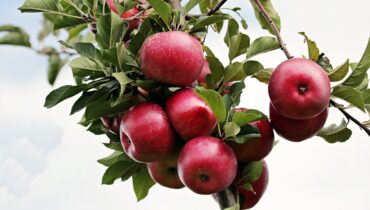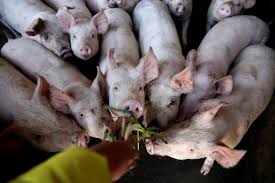How Does One Begin A Watermelon Farm in Ghana?
What do you know about watermelon production and farming in Ghana?
Read also:How To Start A Crop Farming Business And Make The Most money – Useful Guide
This post has some watermelon seed information, as well as a watermelon gardening instruction.
Watermelons’ health benefits are self-evident: the sweet, juicy fruits are recommended for heart and blood vessel disease, kidney disease, liver disease, salt metabolism difficulties, obesity, and a range of other ailments.
It has high levels of potassium, magnesium, iron, folic acid, vitamins, acids, and pectin components.
How to grow or sow watermelon
Watermelons can be found in the Kalahari Desert in South Africa.
There are still wild watermelons in the shape of tennis balls that weigh around 200 grams.
Read also:Essential benefits of having a Backyard Garden
More than 4,000 years ago, watermelons were originally discovered in Ancient Egypt.
Pharaohs’ graves were stocked with watermelons as a source of sustenance for their afterlife.
Watermelons were later cultivated in arid, hot climates such as Persia, Arabia, India, and other Asian countries.
Choosing a watermelon-growing place in Ghana.
The optimum soil for growing watermelons is sandy or loamy soil.
This is exactly what you need if you have a sunny spot that has been fertilized with humus.
THE MAIN DESCRIPTION
- If it’s raining, you should stay away.
Fruits sown immediately after plowing have a better probability of germinating than those planted the next day.
Watermelon seeds - A 3-5 percent salt solution can be used to assess the quality of watermelon seeds.
Those who are ready to be sown are those who sink. - A leathery shell surrounds seeds, preventing them from sprouting.
You can help them by soaking them in warm water (30-35 degrees Celsius) every day. - To make your plants more disease resistant, warm your seeds in the sun for seven to ten days.
Growing watermelon: a step-by-step guide
- The first method for growing watermelon
A convenient watermelon farming method, such as a round hole with a diameter of 1 m, is used to sow the seeds. - Make roughly 10 holes and spread the seeds in them after digging the hole to a depth of 30 cm.
- Watermelons should be planted at a depth of 6-8 cm for great form varieties and hybrids, and 4-6 cm for small seed varieties and hybrids.
- Watermelon seed rows should be 1.4-2.8 meters long, with a 0.5-2.0 meter spacing between crops in each row.
- After fertilizing your sewing with compost, pour your seeds with warm sun-heated water.
- It takes roughly 10 days for seeds to germinate.
- Keep in mind that each hole should only have one plant if you want to develop a large and sweet watermelon outside. Also, no more than three plantings per square meter should be used.
- Watermelon seeds, in particular, need extra care.
Organic fertilizer of choice is humus. Fresh manure shortens the growing season, alters the flavor of the fruit, and reduces disease resistance in the plant.
Phosphorus and potassium-rich fertilizers have an impact on fruit quality and speed up ripening.
Put one pound of compost in each seed hole and cover it with 8-10 inches of soil if the dirt in the holes isn’t fertilized enough. - Remember the row-spacing width for watermelon, which is 1.8 meters.
The sprouts on the mature seedling are evenly distributed: one to the right, the other to the left.
Leave 3-4 leaves on the core stem, which is where the fruit is produced, then nip the remaining stem on the 6-7th leaf.
Watering
During the early stages of development, water your watermelon only once a week.
It will be able to provide moisture on its own in the future, thanks to its long roots.
As a result, you should stop watering the watermelons once they are fully mature.
We find the female flowers (they have a small spherical berry) and pollinate them by touching them with male flowers (with previously disclosed petals) to gather the fruit as soon as possible – you can pollinate them yourself while they are blossoming – we leave natural pollination to bees.
Watermelons should only be collected once they are fully developed; otherwise, if left in the bush, they will ripen for a long time.
Mature fruit has drying tendrils, a consistent colour, a dull sound when fluttering the fruit, and a crackling rind when pushed.
To grow a healthy crop of watermelons, you’ll need to keep the plants warm, limit the number of fruits produced, and feed them properly.
Now, we hope it’s clear how to grow watermelon in Ghana.




Thank you so much. I’m having a go at simple domestic farming in greater Accra. I would love to grow my own vegetables and some fruit naturally. I currently manage tomatoes, okra, peppers, mangoes and sweetcorn however, the weeds and pests are a regular battle for me. I have watermelon seedlings and I plan to plant them today!